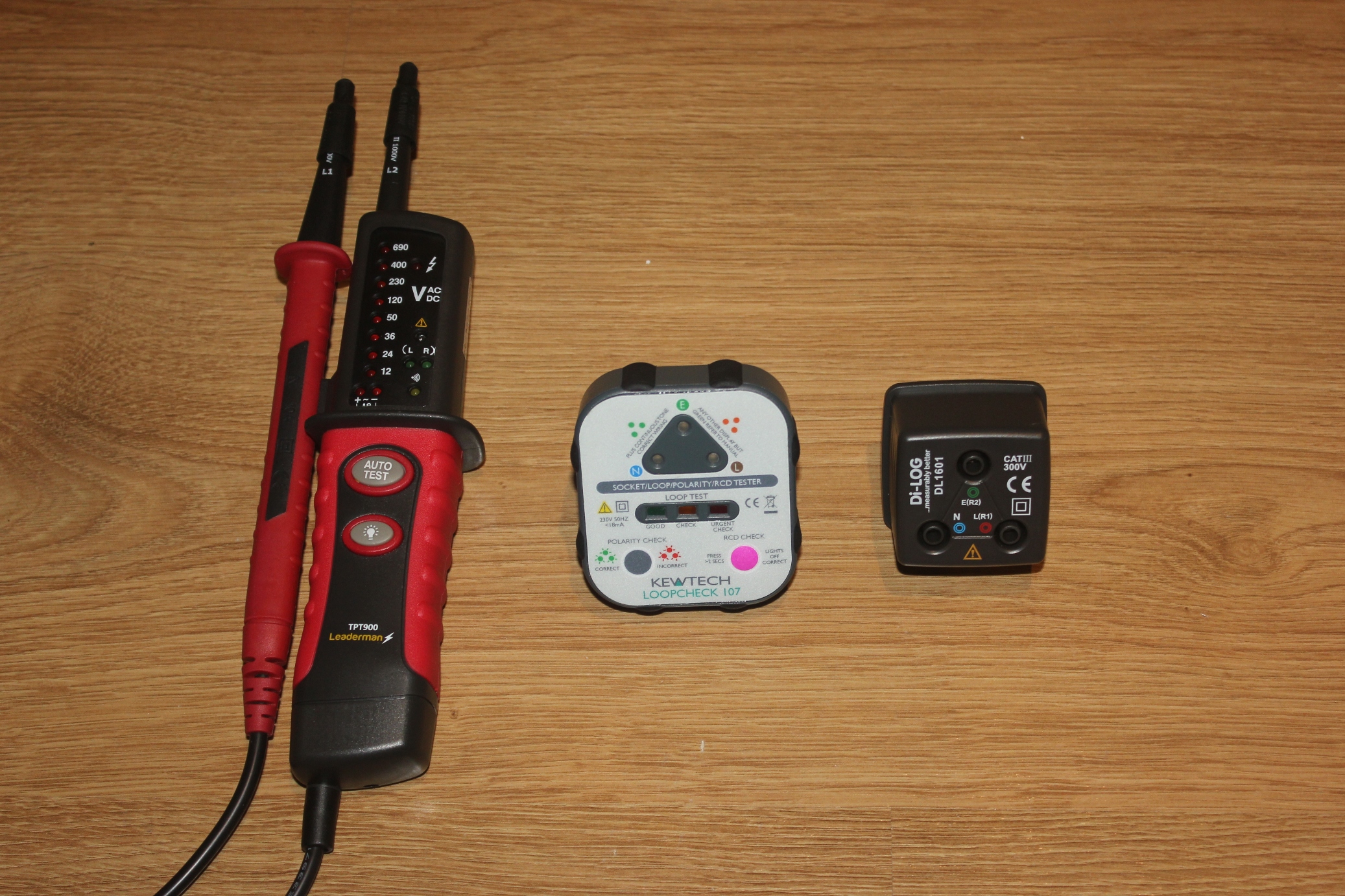What does a loop impedance meter do to measure / calculate the loop resistance. ?
I am sure it applies a known load to the supply and measures the voltage drop that is caused by that load. Short duration, maybe only one or two cycles, to prevent the load in the meter getting hot.
So would using a 3 kW kettle as a load, an accurate RMS volt meter and the ability to apply Ohm's law give a good indication of the loop impedance ?
Likely yes, it would depend on how steady the supply voltage is, from generator with the only item being put on the circuit being the kettle it would be accurate, but with other items being put on and off load at the same time it would mess up your readings, measure two consecutive cycles and the chances of a load being put on or removed at the same time is reduced, and with any loop tester, do it three times and you will get three slightly different readings.
You may remember I wrote some software to use the loop impedance (line - neutral) to work out volt drop, in theory it works, however in practice it was found the loop impedance meter was not accurate enough to prove that the volt drop had been exceeded until it reached well over the permitted levels, measure 0.96Ω instead of 0.94Ω and that's 0.4 volt drop out and only got 11.5 volts to start with. At 1.36Ω with a ring final line - neutral your looking at 19.2 volt drop. Of course the loop impedance we normally quote is line - earth not line - neutral however we should be testing both, however line - neutral is normally expressed as prospective short circuit current, so should be over 244 amp to ensure volt drop of 11.5 volt is not exceeded on a 26 amp average circuit (20 amp centre and 12 amp even spread so 32 amp ring is calculated as being 26 amp for volt drop).
So 10 amp kettle should not cause the voltage to drop more than 4.5 volts if the ring final does not exceed the recommended 106 meters, so 4.5 volt = 0.94Ω approx loop impedance which is the limit for a ring final line - neutral to ensure with 26 amp it does not exceed 11.5 volt.
So a simple energy meter does not give and decimal point, but if when you switch on kettle it does not fall move than 5 volt then the ring would likely pass, if below 4 volt it would pass with flying colours, above 5 volt is a fail. So 6 volt would be 1.14Ω well over the 0.94Ω limit.
If you have no RCD then 8.3 volt = 1.44 with a 10 amp kettle. However the dangers involved measuring with a 10 amp load line - earth means we should not really do this test, if the earth was faulty we could be raising bonded metalwork around the house to 230 volt.





